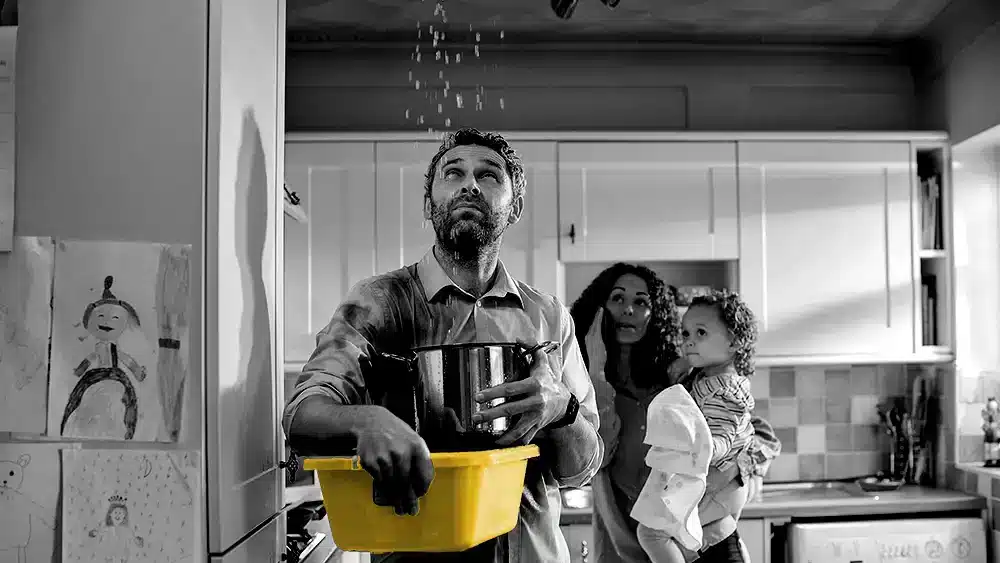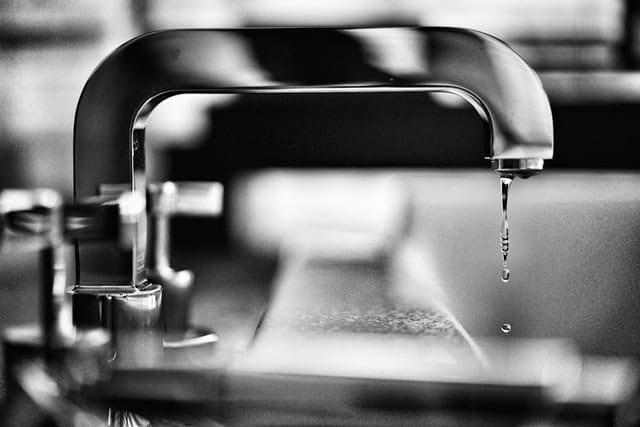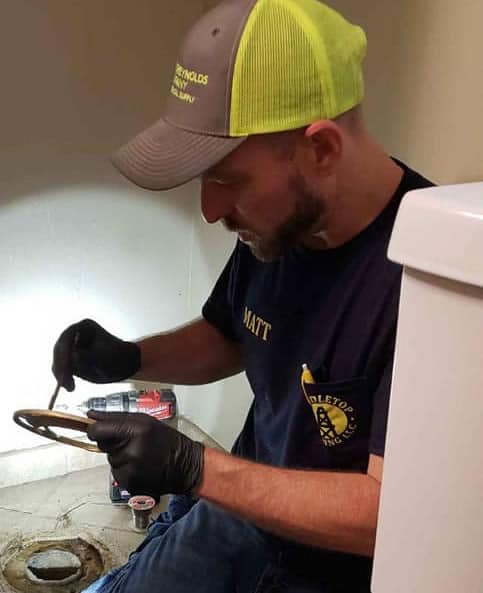Water leaks are among the most underappreciated risks to homes and businesses. Often dismissed as minor inconveniences, these silent threats can cause extensive damage, leading to costly repairs and even health hazards. In this detailed guide, we’ll explore why water leaks are so dangerous, signs that you may have a water leak, common causes, and how professional plumbing inspections by Spindletop Plumbing in Southeast Texas can safeguard your property.
The Extensive Dangers of Water Leaks: A Detailed Exploration
Water leaks represent a silent yet formidable threat to both residential and commercial properties. Left unchecked, these seemingly minor issues can spiral into catastrophic problems, inflicting extensive damage that is both costly and challenging to reverse. Below, we delve deeper into the myriad of reasons why water leaks are a hazard that warrants immediate attention.
Profound Structural Damage
The impact of continuous water leakage on a building’s structure cannot be overstated. As water infiltrates the very bones of a building—its foundations, walls, and floors—it sets off a series of destructive processes. Wood begins to rot, a condition that compromises its strength and functionality, while metal components are subject to rust and corrosion. This degradation not only weakens the structural integrity of a building but also diminishes its value and aesthetic appeal. Over time, the cumulative effect of this damage can render a structure unsafe, necessitating extensive and expensive repairs to restore safety and functionality.
Escalating Mold and Mildew Proliferation
The presence of persistent moisture creates an ideal habitat for mold and mildew to flourish. These fungal invaders not only mar surfaces with unsightly stains and pervasive odors but also pose significant health hazards. For individuals with allergies, asthma, or compromised immune systems, exposure to mold spores can trigger severe reactions and exacerbate existing conditions. The task of eradicating mold and mildew once they have taken hold is not only labor-intensive but also requires specialized treatment methods, making it a costly endeavor.
Enhanced Electrical Hazards
The intersection of water and electricity forms a perilous nexus that heightens the risk of electrical hazards. When leaks come into contact with electrical systems, such as wiring or panels, the potential for short circuits and electrical fires escalates dramatically. This poses a dual threat: it endangers the physical property and, more critically, the safety of its inhabitants. The implications of such incidents can be devastating, leading to loss of life and significant property damage.
Environmental Impact and Financial Implications
Water leaks contribute to the wasteful expenditure of one of our most precious resources: water. This not only has environmental ramifications, highlighting a disregard for sustainable practices, but also financial consequences. A seemingly negligible leak can result in the loss of thousands of gallons of water over time, manifesting as a substantial increase in utility bills. Prompt detection and repair of leaks are thus not only environmentally responsible but also economically prudent, potentially saving substantial amounts of money in the long run.
Pest Infestations
The correlation between moisture and pest infestations adds another layer of concern to the problem of water leaks. Moist environments act as magnets for a variety of pests, including termites, ants, and rodents. These uninvited guests are not merely nuisances; they can inflict further damage to the property, exacerbating existing issues and creating new ones. The process of eliminating a pest infestation, particularly after it has become established, can be complex, requiring professional intervention and additional financial outlay.
Compounding the Problem: Health and Safety Risks
Beyond the immediate physical damage to the structure and the financial implications, water leaks pose serious health risks. The proliferation of mold and mildew can lead to respiratory issues and other health problems for occupants. Moreover, the structural damage resulting from unchecked leaks can eventually lead to catastrophic failures, risking injuries or even fatalities.
The Long-Term Consequences
The cumulative effect of ignoring water leaks can be staggering. Over time, the cost of remediation, both in terms of financial outlay and human health, can far exceed the expense of early detection and repair. Additionally, the environmental impact of wasted water and the potential for increased pest-related diseases should not be underestimated.
The dangers of water leaks extend far beyond the immediate inconvenience they may present. They are a multifaceted threat that can cause extensive structural damage, health hazards, electrical risks, and environmental harm. Recognizing the signs of water leaks and addressing them promptly is not merely a matter of property maintenance but a critical investment in safety, health, and financial wellbeing. As such, homeowners and businesses alike must take proactive steps to monitor for leaks and engage professionals to address and mitigate these risks effectively.
Comprehensive Guide to Detecting and Understanding Water Leaks
Detecting water leaks early can significantly mitigate the damage and costs associated with them. Recognizing the signs of a water leak is the first step in addressing this common issue. Below are expanded details on indicators of water leaks and insights into their common causes, equipping you with the knowledge to prevent potential disasters.
In-Depth Signs You May Have a Water Leak
Unexplained Increase in Water Bills
A noticeable surge in your water bill, despite consistent usage patterns, often signals a leak. This can be the first and sometimes the only indication of a hidden problem, warranting a thorough inspection of your property.
Musty Odors
Persistent musty odors, particularly in areas that are supposed to be dry, are a clear sign of excess moisture. This could indicate water accumulating in hidden areas, fostering an environment where mold and mildew thrive.
Damp Spots
Unexplained damp spots on your floors, walls, or ceilings are visible cues of water leaks. These spots may not only indicate a leak but can also lead to structural damage if not promptly addressed.
Mold and Mildew Presence
The emergence of mold and mildew in typically dry areas is a significant red flag. These fungi not only affect the structural integrity of your home but also pose health risks to its inhabitants.
Sounds of Running Water
If you hear the sound of water running or dripping when all taps are turned off, it’s likely there’s a leak. This sound can often be traced to the source of the leak with a careful listen.
Cracks in Foundation
Water leaks can lead to excessive moisture around the foundation of your building, causing cracks. These cracks not only threaten the structural stability of your property but can also lead to more severe water infiltration issues.
Water Pressure Fluctuations
Unexpected changes in water pressure during usage can indicate a leak in your system. A sudden drop in pressure might suggest a breach in your pipes.
Discoloration of Surfaces
Water leaks can cause discoloration or staining on surfaces such as walls and ceilings. These stains often appear as rings of brown or yellow and are particularly indicative of a long-standing leak.
Peeling Paint or Wallpaper
Water seepage behind walls can lead to the peeling of paint or wallpaper. This usually suggests that the leak has been ongoing for some time, causing enough damage to compromise wall coverings.
Increase in Pest Activity
An uptick in pest activity can be linked to increased moisture from leaks. Many pests are attracted to damp environments, making your home more susceptible to infestations.
Common Causes of Water Leaks
Aging Infrastructure
As plumbing systems age, they become more prone to leaks. Materials deteriorate over time, and the risk of a breach in these systems increases, especially in homes over 25 years old.
High Water Pressure
Water pressure that’s too high can stress your plumbing system, causing leaks in weak spots. Regular checks can help identify if water pressure is within safe limits to prevent damage.
Temperature Fluctuations
Seasonal temperature changes can cause pipes to expand and contract, sometimes leading to fractures. This is particularly a risk in areas with severe winters or sudden temperature swings.
Corrosion
Metal pipes are susceptible to corrosion over time, which can thin the pipe walls and lead to leaks. The type of water in your area can accelerate this process, making some regions more prone to pipe corrosion.
Clogged Lines
Clogs in your plumbing can cause water to back up and exert pressure on your pipes. Over time, this pressure can lead to leaks or even burst pipes, resulting in significant damage.
Improper Pipe Installation
Faulty or improper installation of pipes can lead to weak joints or breaks in the system. Ensuring professional installation and regular maintenance can mitigate these risks.
Tree Root Intrusion
Tree roots seeking moisture can infiltrate and damage piping systems, leading to leaks. Regular inspection of the landscaping around your property can help identify potential threats.
Ground Movement
Subtle shifts in the ground around your property can place unexpected pressure on piping systems, leading to leaks. This is often a slow process and can be difficult to detect without professional help.
By understanding these signs and causes of water leaks, homeowners and businesses can take proactive steps to prevent potential damage. Regular inspections, maintenance, and immediate action upon detecting any signs of a leak are crucial in safeguarding your property against the myriad issues water leaks can cause.
The Role of Professional Plumber Inspections
Regular inspections by qualified plumbers, like those from Spindletop Plumbing, are invaluable in preventing water leaks. Here’s how professional inspections can help:
Early Detection
Plumbers use specialized tools and their expertise to detect leaks that are not yet visible, preventing potential damage.
Preventive Maintenance
Regular maintenance can identify and address issues like corrosion, high water pressure, and aging infrastructure before they lead to leaks.
Expert Recommendations
Professional plumbers can provide tailored advice on how to care for your plumbing system, potentially extending its lifespan and preventing future leaks.
Peace of Mind
Knowing that your plumbing system has been professionally inspected and maintained can provide peace of mind, knowing that you are taking proactive steps to protect your property.
Water Leak Repair Plumbers in Southeast Texas
Water leaks pose a significant threat to homes and businesses, potentially leading to structural damage, health hazards, and financial losses. Recognizing the signs of a leak and understanding its causes are critical first steps in prevention. However, the most effective strategy to protect your property is regular inspections and maintenance by professional plumbers. Spindletop Plumbing in Southeast Texas offers comprehensive inspection services designed to identify potential problems early, saving you time, money, and stress in the long run. Remember, when it comes to water leaks, prevention is always better than cure.
Spindletop Plumbing
409-748-5186
https://facebook.com/spindletopfixit/
Google Business Listing



